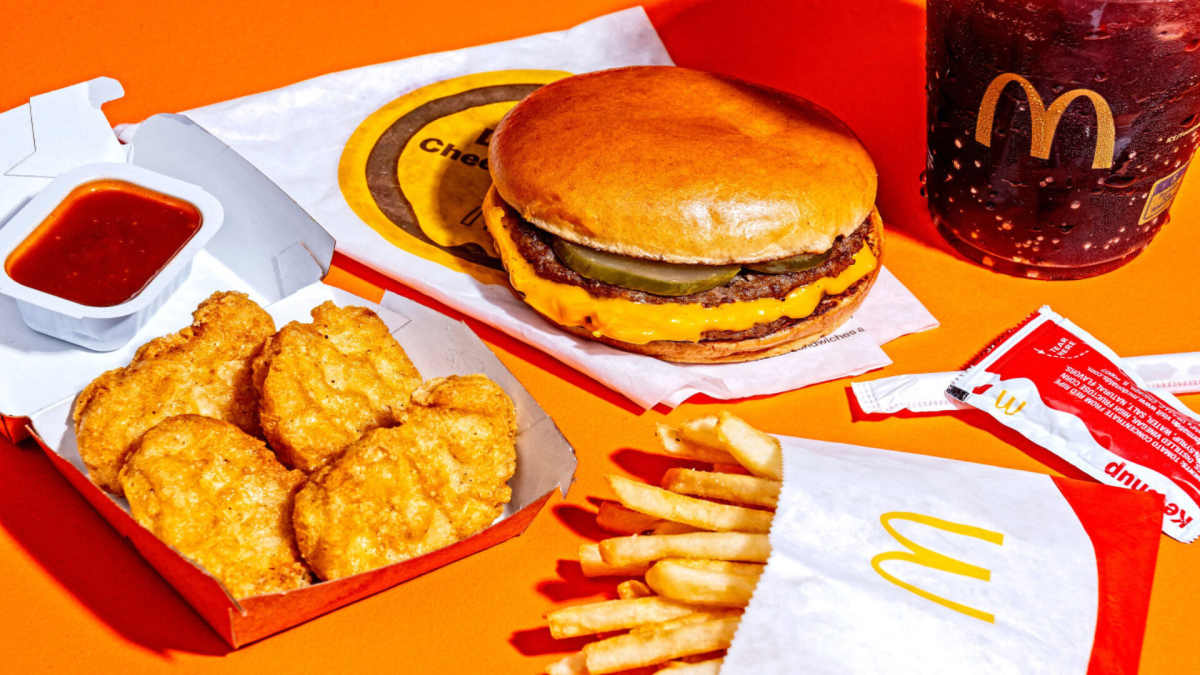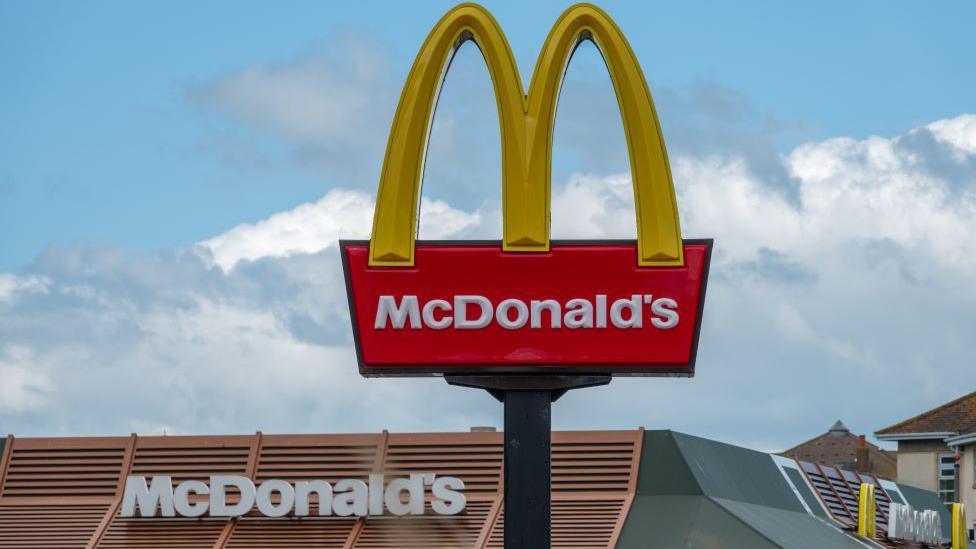
McDonald’s is the ultimate success story in marketing: a brand that turned affordable, quick meals into a worldwide cultural icon known in more than 100 countries. They’ve achieved something remarkable – making billions of people worldwide crave their products while simultaneously claiming they “rarely eat fast food.” That’s not merely marketing; it’s like a bit of psychological magic tucked away in a Happy Meal box.
The Reality: Did you know that McDonald’s serves around 69 million customers every single day? That’s about the same as the entire population of France munching on Big Macs daily! Yet, it’s funny how no one ever seems to admit they’re one of those customers.
McDonald’s 2003 “I’m Lovin’ It” campaign is arguably one of the most successful global branding efforts in the fast-food industry. That iconic five-note jingle breaks through language barriers, sticking in our minds like a tune you just can’t shake off (and let’s be honest, it really is a catchy song). They transformed a simple slogan into a cultural shorthand for satisfaction – even if that satisfaction lasts exactly as long as your meal.
McDonald’s marketing brilliance shines through their “glocal” approach. While the iconic Golden Arches stay the same, the menu cleverly shifts to cater to local preferences. Just look at the McSpicy Paneer in India, Teriyaki Burgers in Japan, and Poutine in Canada—these offerings show that McDonald’s truly gets a fundamental truth: people love their familiar comforts, but with a twist of local flavor. It’s standardization meets customization – having your Big Mac and eating it too.
Marketing to kids goes beyond just making a quick sale – it’s really about creating brand loyalty that lasts a lifetime. Take the Happy Meal, for instance; its fun toys and colorful packaging help forge emotional bonds during those crucial early years. McDonald’s isn’t just after your business right now; they’re aiming for your nostalgic loyalty for decades to come.
Have you ever noticed that McDonald’s ads hardly ever talk about how their food actually tastes? Instead, they focus on selling experiences, moments, and feelings. Their marketing cleverly positions McDonald’s as the perfect backdrop for all of life’s little adventures – whether it’s a first date, a late-night study session, or a family road trip. They’re not just pushing burgers; they’re offering up memories, with a side of fries, of course.
When it comes to celebrity partnerships, McDonald’s has really hit the mark, from Travis Scott meals to BTS collaborations. These limited-time offerings don’t just feel like a gimmick; they create a sense of urgency and generate a buzz on social media. It’s all about making McDonald’s seem culturally relevant, not just a convenient fast-food option.
McDonald’s mobile app strategy demonstrates sophisticated digital marketing. Personalized offers, gamification through rewards, and mobile ordering transform occasional customers into frequent visitors. They’ve essentially turned fast food into a video game where everyone’s trying to unlock the next deal.
McDonald’s social media game is on point, seamlessly blending planned posts with real-time marketing. They jump on trends in a flash, interact with their customers’ content, and even throw in some self-deprecating humor. This approach has transformed a fast-food brand into something that feels friendly and in tune with the culture.
McDonald’s has encountered a variety of challenges over the years, from health issues and labor disputes to environmental concerns. Their approach to marketing during these times showcases their adept crisis management skills: they acknowledge the issues, emphasize the improvements they’ve made, and adjust their messaging while staying true to their brand identity.
McDonald’s really showcases some key principles: the strength of having a consistent global brand while still adapting to local tastes, the value of building emotional connections instead of just focusing on product features, and the success that comes from creating memorable brand experiences rather than simply making transactions.
Their success proves that outstanding marketing isn’t just about offering the best product – it’s really about forging the deepest emotional connections and providing the most seamless experience.
Analyzing complex global marketing strategies like McDonald’s? StudyCreek offers comprehensive resources for students tackling international brand management and glocalization case studies.
Need deeper academic support with your marketing coursework and strategic brand analysis projects? DissertationHive provides expert assistance for students navigating challenging case studies and marketing theory applications.

Sample Answer:
Read Case 3.2 on McDonald’s – The World’s Number One Fast-Food Company! in Basic Marketing Research. Write a paper that addresses the following scenario and questions.
Scenario: McDonald’s is considering expanding in the United States.
1. What is the management-decision problem and, as a result of that, what is the marketing-research problem?
2. Would the management-decision and marketing-research problems be different from those you named in #1, above, if McDonald’s were considering an international expansion? Why or why not?
3. What types of information from the survey will help McDonald’s with its decision?
4. Should McDonald’s also perform exploratory research? Why or why not?
Your paper should meet the following requirements:
Sample Answer:
McDonald’s: Strategic Expansion and Marketing Research Challenges
Student Name
Course Title
Instructor
Date
McDonald’s, the top fast-food chain in the world, is always on the lookout for ways to grow, both at home and abroad. When it comes to expanding in the United States, the company faces some significant strategic and research challenges. To make smart choices, management needs to clearly outline the management-decision problem and the marketing-research problem, grasp the importance of survey data, and figure out if exploratory research should be included in their approach.
The management decision facing McDonald’s revolves around whether increasing the number of its outlets in the United States will result in lasting profitability. This raises important questions like: Is there sufficient market demand to support further expansion? How will this affect existing store performance? The management-decision problem is all about making smart business choices – like figuring out what McDonald’s should do next to boost its market share without flooding the domestic market.
The marketing-research problem arises from the need to pinpoint the exact information that will guide decision-making. In this case, we could frame the problem like this: What are the current and upcoming consumer preferences when it comes to quick-service restaurants in the U.S.? What regional markets remain underserved? How do economic and social trends shape the way customers behave? This research problem takes a more diagnostic and analytical approach, concentrating on collecting the data needed to help guide management’s decisions.
If McDonald’s were thinking about expanding internationally, the challenges in decision-making and marketing research would look quite different. While the focus domestically is on market saturation and changing consumer habits in the U.S., going global brings in a whole new set of factors like cultural preferences, levels of economic development and local competition. For instance, McDonald’s needs to think about how local eating habits and regulations influence their menu options and pricing strategies in different countries (Kotler & Keller, 2022). This means the research problem would broaden to cover things like cross-cultural consumer behavior, strategies for localization and assessments of political or economic risks.
Survey data is going to play a vital role for McDonald’s, both at home and around the globe. Insights into things like how satisfied customers are, their spending habits, what they think about value, and their interest in healthier menu choices can guide the company in identifying where the demand is highest. Plus, understanding demographic and psychographic details will help pinpoint which customer segments are most likely to embrace new products or store openings (Malhotra & Dash, 2020).
It’s really important to dive into exploratory research. This type of research sheds light on unclear issues, sparks new ideas, and reveals the deeper reasons behind consumer choices that more structured surveys might overlook. For instance, using focus groups or conducting in-depth interviews could give McDonald’s valuable insights into why customers might lean towards rival brands or prefer digital ordering options. These findings can then inform more focused quantitative research down the line.
To wrap things up, McDonald’s really needs to make a clear distinction between the management decision at hand—whether or not to expand – and the marketing research question – what information is necessary to make that decision wisely. By blending survey data with exploratory insights, McDonald’s can more effectively tackle the challenges of growing domestically while keeping its top spot in the global fast-food scene.
References
Kotler, P., & Keller, K. L. (2022). Marketing management (16th ed.). Pearson.
Malhotra, N. K., & Dash, S. (2020). Marketing research: An applied orientation (8th ed.). Pearson Education.
Delivering a high-quality product at a reasonable price is not enough anymore.
That’s why we have developed 5 beneficial guarantees that will make your experience with our service enjoyable, easy, and safe.
You have to be 100% sure of the quality of your product to give a money-back guarantee. This describes us perfectly. Make sure that this guarantee is totally transparent.
Read moreEach paper is composed from scratch, according to your instructions. It is then checked by our plagiarism-detection software. There is no gap where plagiarism could squeeze in.
Read moreThanks to our free revisions, there is no way for you to be unsatisfied. We will work on your paper until you are completely happy with the result.
Read moreYour email is safe, as we store it according to international data protection rules. Your bank details are secure, as we use only reliable payment systems.
Read moreBy sending us your money, you buy the service we provide. Check out our terms and conditions if you prefer business talks to be laid out in official language.
Read more